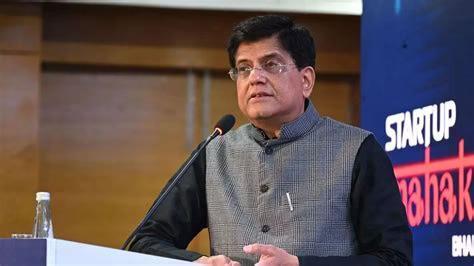
Indian Brands Go Global: Competing on Design & Quality
In recent years, the global business landscape has witnessed a significant shift in the way Indian brands operate. Gone are the days when Indian companies were solely focused on attracting foreign brands to the country. Today, Indian brands are not only competing with international players but are also expanding globally, backed by their strong manufacturing capabilities and strategic marketing efforts.
According to Dheeraj Sinha, CEO of FCB India, Indian brands are winning globally on the back of their design, quality, and competitiveness. In an interview with The Core, Sinha emphasized that Indian brands are no longer just trying to copy Western designs but are instead creating their own unique identity, which is resonating with global audiences.
One of the key factors contributing to the success of Indian brands globally is their ability to marry traditional craftsmanship with modern technology. For instance, companies like Raymond and Louis Philippe are leveraging their rich textile heritage to create high-quality fabrics that are in demand worldwide. Similarly, brands like Titan and Hidesign are using their expertise in jewelry and leather goods to create products that are both stylish and durable.
Another significant factor is the growing importance of design in the global market. In an era where consumers are increasingly influenced by aesthetics, Indian brands are investing heavily in design to create products that are not only functional but also visually appealing. Companies like Godrej and Prestige are recognizing the value of design in building brand equity and are allocating significant budgets to design and innovation.
Moreover, Indian brands are also leveraging their strategic location to tap into global markets. With its large and growing middle class, India offers a vast talent pool and a cost-effective manufacturing base, making it an attractive destination for global companies. Furthermore, the country’s proximity to the Middle East, Africa, and Southeast Asia makes it an ideal hub for exporting goods to these regions.
Indian brands are also focusing on creating a strong online presence to reach a global audience. With the rise of e-commerce, companies are no longer limited by geographical boundaries and can reach customers worldwide with ease. Brands like Flipkart and Myntra are leveraging their online platforms to sell products to customers globally, while companies like Ola and Uber are using their digital strength to expand their operations into new markets.
The success of Indian brands globally is also driven by their ability to adapt to changing consumer preferences. In an age where sustainability and eco-friendliness are becoming increasingly important, Indian brands are embracing these values and incorporating them into their products and services. Companies like Patanjali and Haldiram are using natural ingredients and sustainable practices to create products that appeal to environmentally conscious consumers.
The Indian government too has played a crucial role in promoting Indian brands globally. Initiatives like the ‘Make in India’ campaign and the ‘Startup India’ initiative have created a supportive ecosystem for entrepreneurs and small businesses to scale up and expand globally. Additionally, the government’s efforts to simplify regulations and reduce bureaucratic hurdles have made it easier for Indian companies to access global markets.
In conclusion, Indian brands are no longer just regional players but are now serious global contenders in industries ranging from consumer goods to technology. By competing on design, quality, and innovation, Indian brands are establishing themselves as leaders in their respective fields and are poised to continue their global expansion in the years to come.






